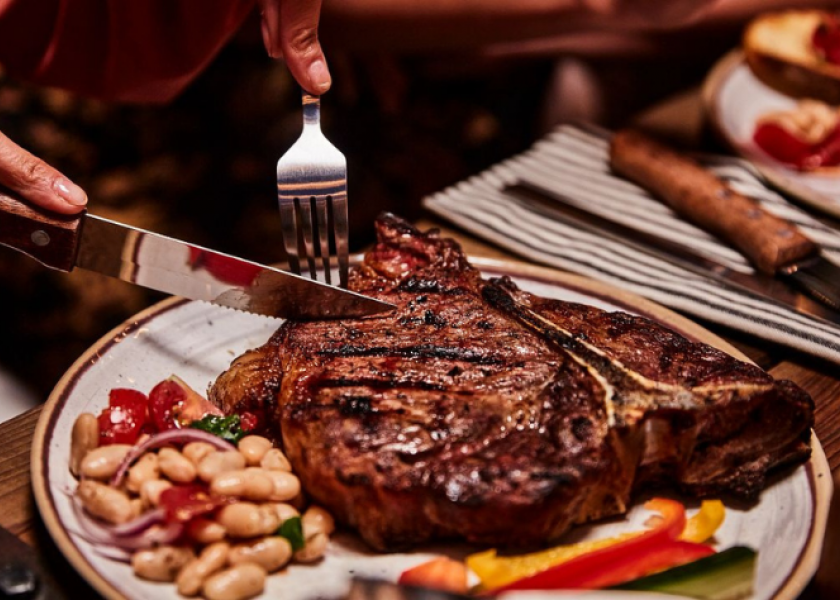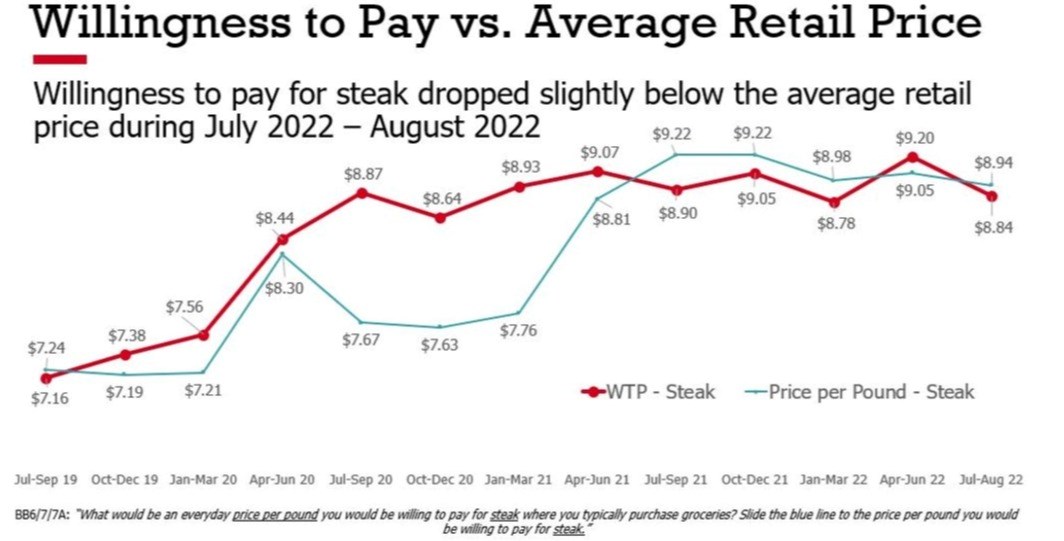Are Consumers Still Satisfied With Steak?

The National Cattlemen’s Beef Association (NCBA), on behalf of the Beef Checkoff, is continually monitoring and identifying the main drivers of beef demand. These five primary demand drivers are thought to be some of the most significant influencers of beef demand, and consist of eating experience, convenience/versatility, price, raised/grown and nutrition. NCBA, on behalf of the Beef Checkoff, conducts regular studies to monitor beef’s performance within these primary demand drivers. One such survey makes use of the Consumer Beef Tracker to continually monitor reported levels of consumer satisfaction while eating various beef products.
Beef steak has historically been a popular cut among beef consumers, both at retail and foodservice. While beef steak may be associated with a higher average price compared to other protein products, a consistently satisfying eating experience continues to drive its popularity.

Figure 1. Satisfaction from Beef Eating Experiences1
Consumer satisfaction remains the highest for steak products, both at home and at a restaurant. Figure 1 shows that consumers recognize and appreciate the eating experience received from purchasing beef steak. Interestingly, claims of satisfaction are higher at home for all three products, potentially because meals at home can be customized much easier than meals at a restaurant. This trend also comes in light of decreasing restaurant visits across the food service chain. Foodservice traffic has decreased over 10% year-over-year in June 2022, with a further yearly decrease from March to May 2022. As inflationary pressures continue to rise, consumers are being forced to alter their preferences and household budgets.

Figure 2. Occurrences of Eating Steak at Home and at Restaurants.
Steak is not exempt from these decreased restaurant visits. Figure 2 shows occurrences of eating steak in a restaurant have decreased by 27% from January 2022 – August 2022, while occurrences of eating steak at home have increased by 15% from January 2022 – August 2022, further indicating that consumers are shifting to dining in instead of visiting a restaurant. However, despite the decreasing occurrences of restaurant visits, spending at restaurants increased 7% in June 2022, although this could be due to elevated price levels at restaurants. While some consumers may continue to visit restaurants despite these increased prices, other consumers may opt to dine at home in favor of affordability.

Figure 3. Average Satisfaction Levels of Eating Steak Both at Home and at a Restaurant
Trending satisfaction levels for eating steak at home have fluctuated throughout the first quarter of 2022, before reaching a 2022 year to date high in July. Since then, satisfaction levels have decreased from July 2022 – August 2022. Steak satisfaction levels at a restaurant exhibited more volatility through the first and second quarters of 2022, before dropping from June 2022 – August 2022. These recently decreased levels of satisfaction could be due to the increased cost of the meals. If this is the case, then steak is not alone as most food products have increased in price over the past year.

Figure 4. Steak Willingness to Pay vs. Average Retail Price
Willingness to pay for steak has also decreased slightly from the high of April – June 2022, as shown by Figure 4, and has dipped slightly below the average retail price for the same time frame. This inversion could be due to the increased price volatility within protein markets over the last few months. As prices for common goods continue to climb, consumers may become less able to purchase the same goods they historically have. Despite this recent dip, the current willingness to pay for July – August 2022 remains strong in comparison to past willingness to pay reports and is currently $1.70 higher than July – September 2019. Additionally, willingness to pay for steak has remained consistently above other proteins and other beef cuts.
As various economic forces continue to affect consumer preferences, beef steak continues to remain a popular protein source due to the consistently enjoyable experience this cut provides, both at home and at a restaurant. As restaurant visits remain compressed and prices continue to be a pain point for consumers, at home preparation continues to occupy a larger share of beef purchases. As consumers continue to employ caution with their purchasing decisions, a reliable and enjoyable eating experience may work in beef steaks favor. It is important that the industry continues efforts to assure consumers that eating steak will not only provide a satisfying experience but can also be purchased amidst tightening household budgets.







